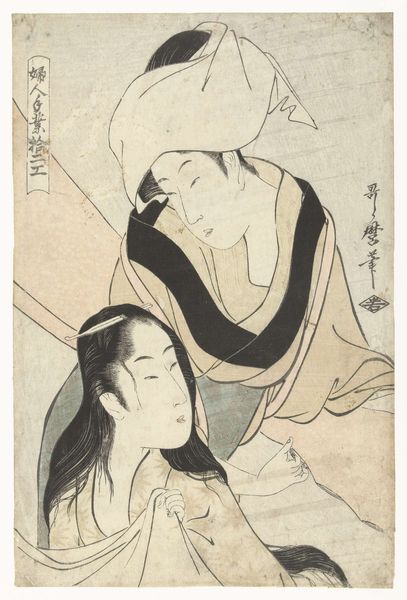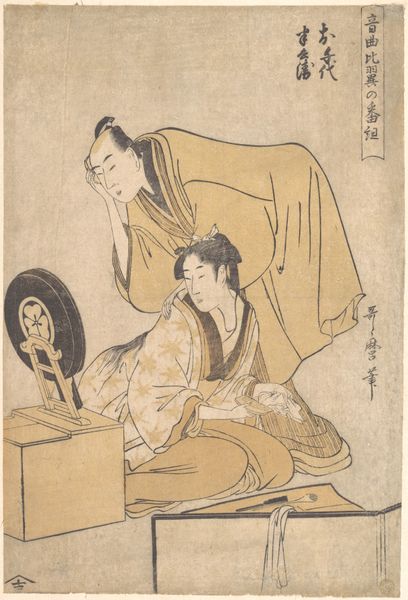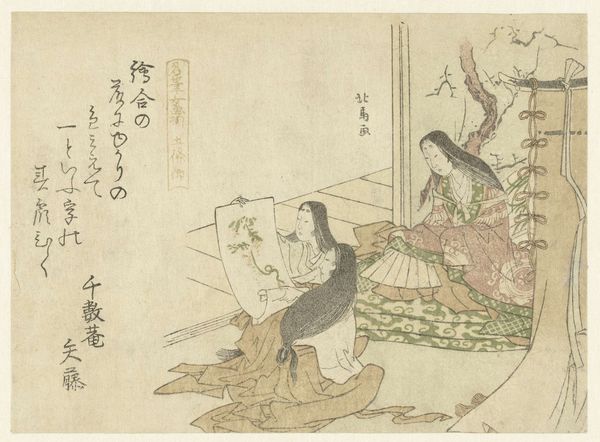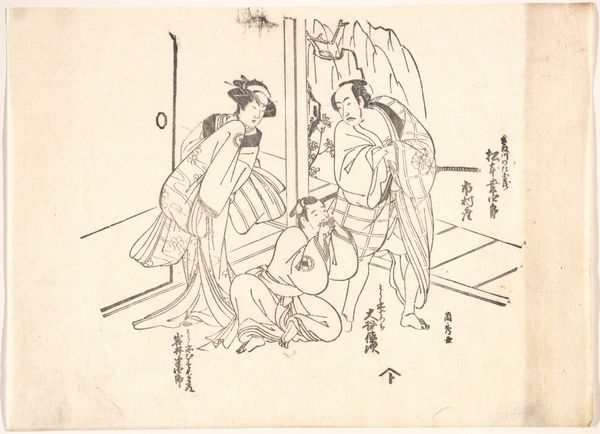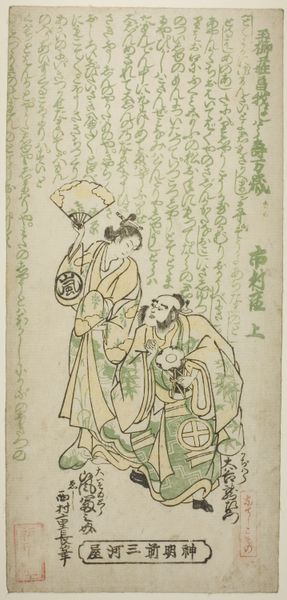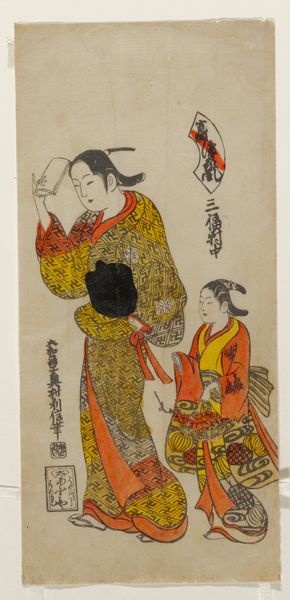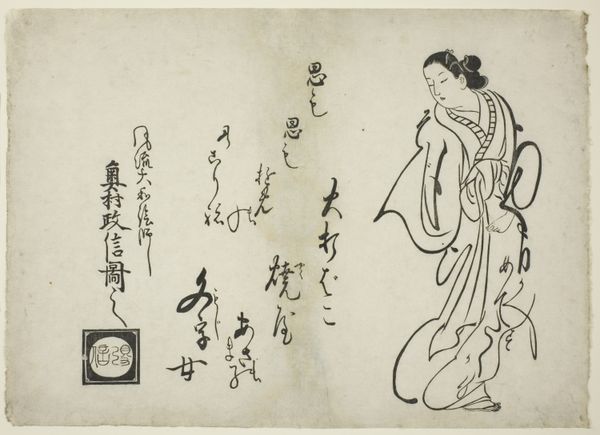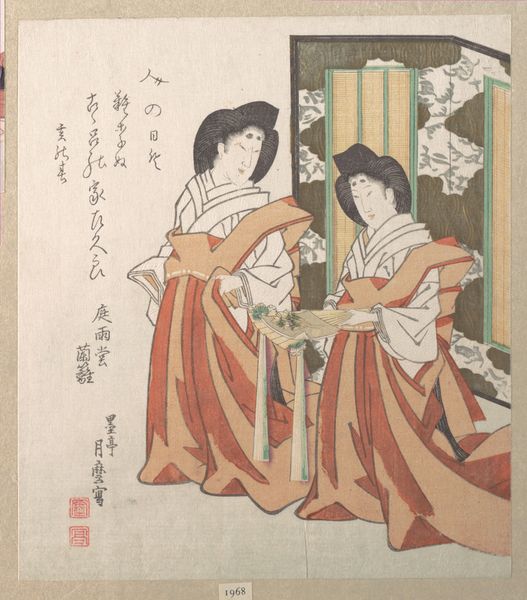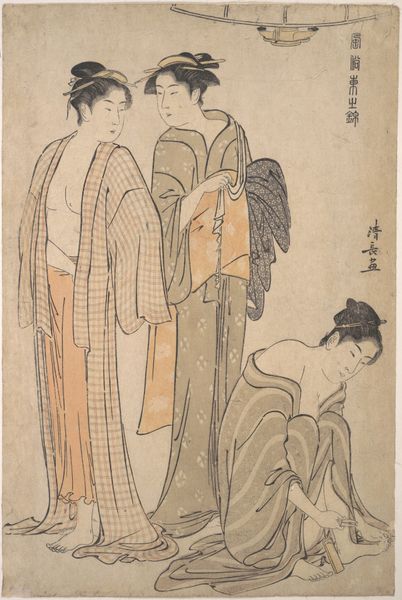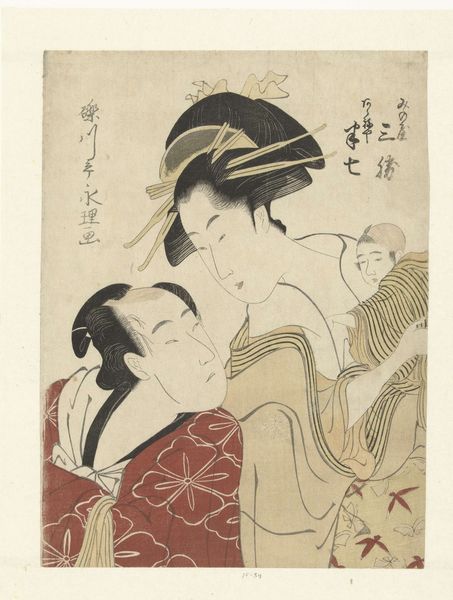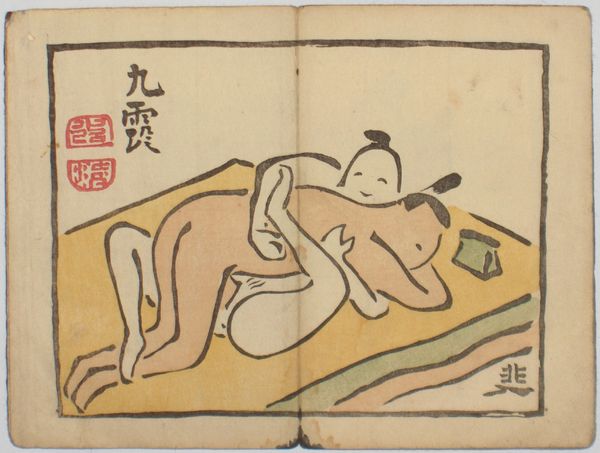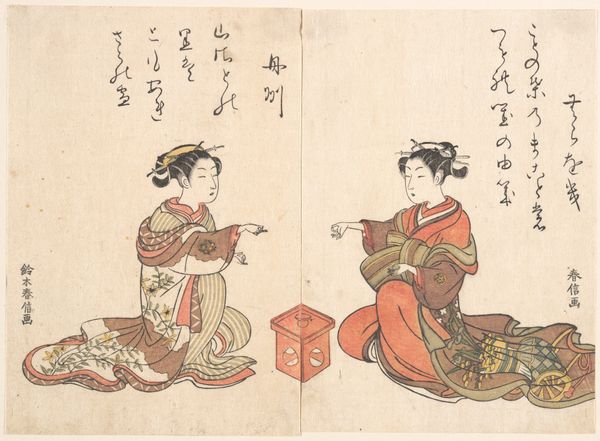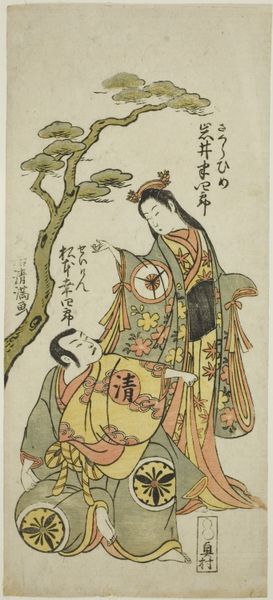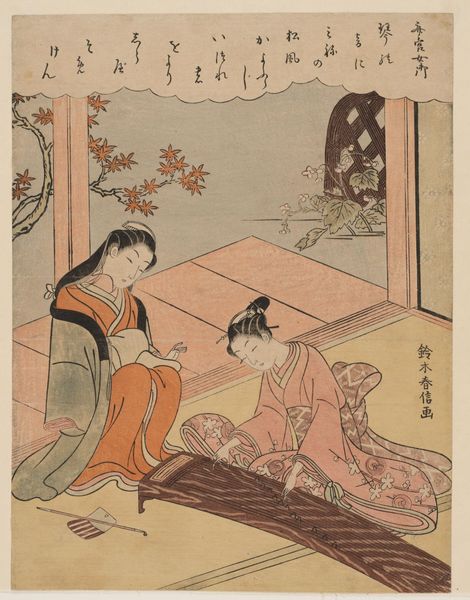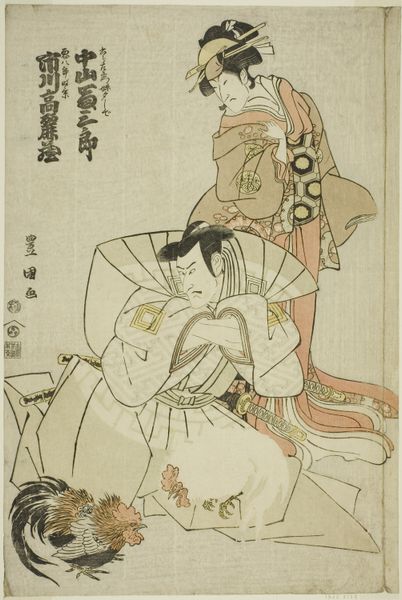
drawing, ink
#
portrait
#
drawing
#
asian-art
#
ukiyo-e
#
figuration
#
ink
Copyright: Public domain
Curator: This drawing is attributed to Ike no Taiga, a figure influential in the Japanese literati art scene, and is titled “Daito keigo (1)”. Editor: It has an ethereal quality, doesn’t it? The pale washes of color and the simple outlines create a kind of otherworldly intimacy. Curator: Indeed. Notice how Taiga renders the figures with a minimal number of lines. This economy of form is very deliberate. The composition focuses attention on the negative space, almost like the figures are emerging from or dissolving into it. This allows for a play of form and void that reflects Taoist principles about emptiness. Editor: I’m curious about the materials used. The texture of the paper suggests it was made by hand and most likely with the inner bark fibers from the mulberry tree, adding a certain earthy materiality to the refinement of the figuration. You get a sense of the labor invested into crafting that smooth, absorbent surface for these delicate ink applications. Curator: Absolutely. Consider how the choice of materials supports the content. The artist creates a subtle but powerful visual statement through the contrast between the delicacy of the figures and the rough texture of the paper. The simple application of ink suggests a rapid yet careful method of construction in the design, while the limited color range—red against cream—brings visual focus without overpowering. Editor: That contrast between the refined drawing and humble materials echoes something about social hierarchies too. Taiga was moving within intellectual circles yet creating artwork linked with folk craft, like the block printing we often see in the Ukiyo-e style which may have been a model. His focus might have been to elevate these ordinary things. Curator: That’s a good point, to consider Taiga’s drawing in connection to Ukiyo-e, "pictures of the floating world.” Both celebrate scenes of daily life and nature. The style makes it simple and direct. Editor: So we’re really observing an image born out of social context as much as artistic form. Understanding that balance between labor, craft, and expression gives so much depth to something that, at first glance, seemed simple. Curator: I agree completely. It's through considering the formal components that we can understand Taiga’s vision more fully. Editor: This brief look into the art making process and materials gives such insight into cultural relevance, reminding us of the social values driving artistic decisions, even centuries ago.
Comments
No comments
Be the first to comment and join the conversation on the ultimate creative platform.
